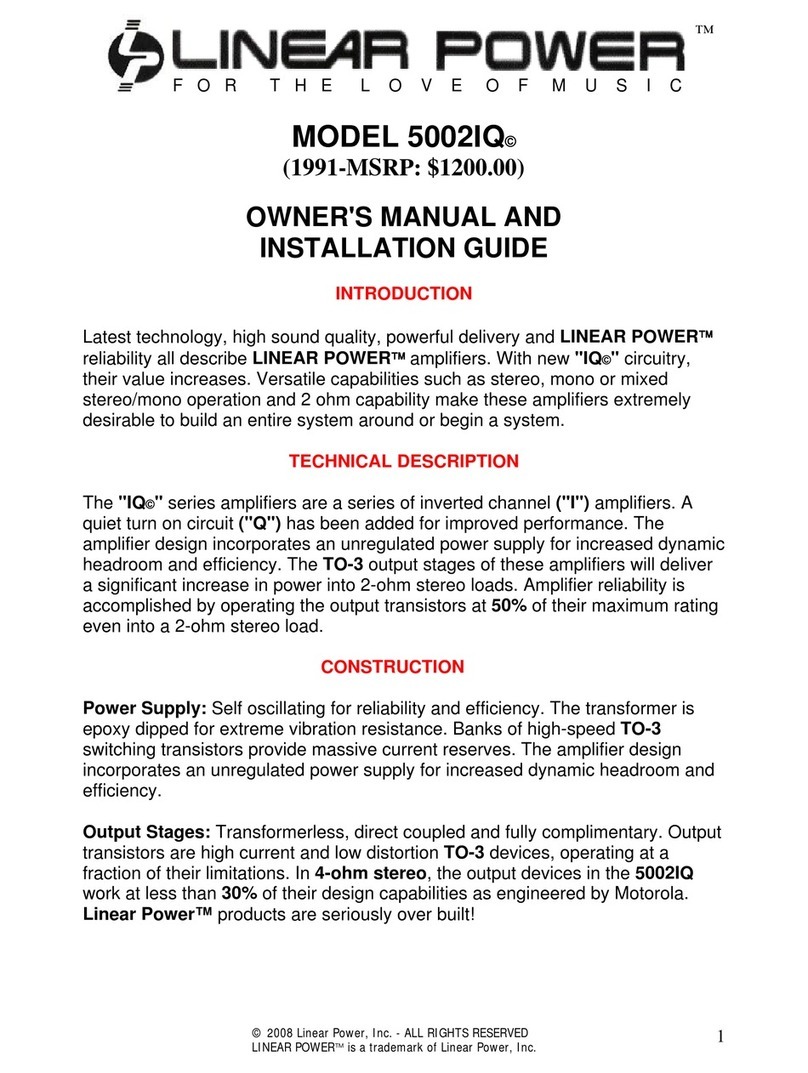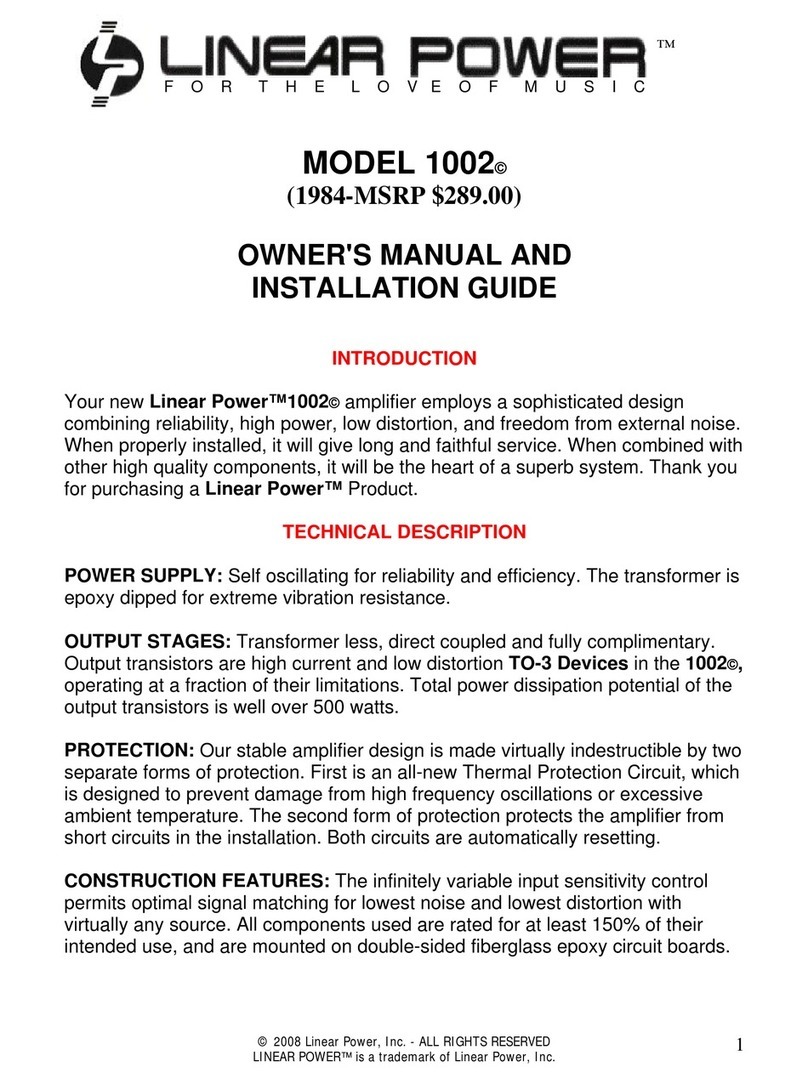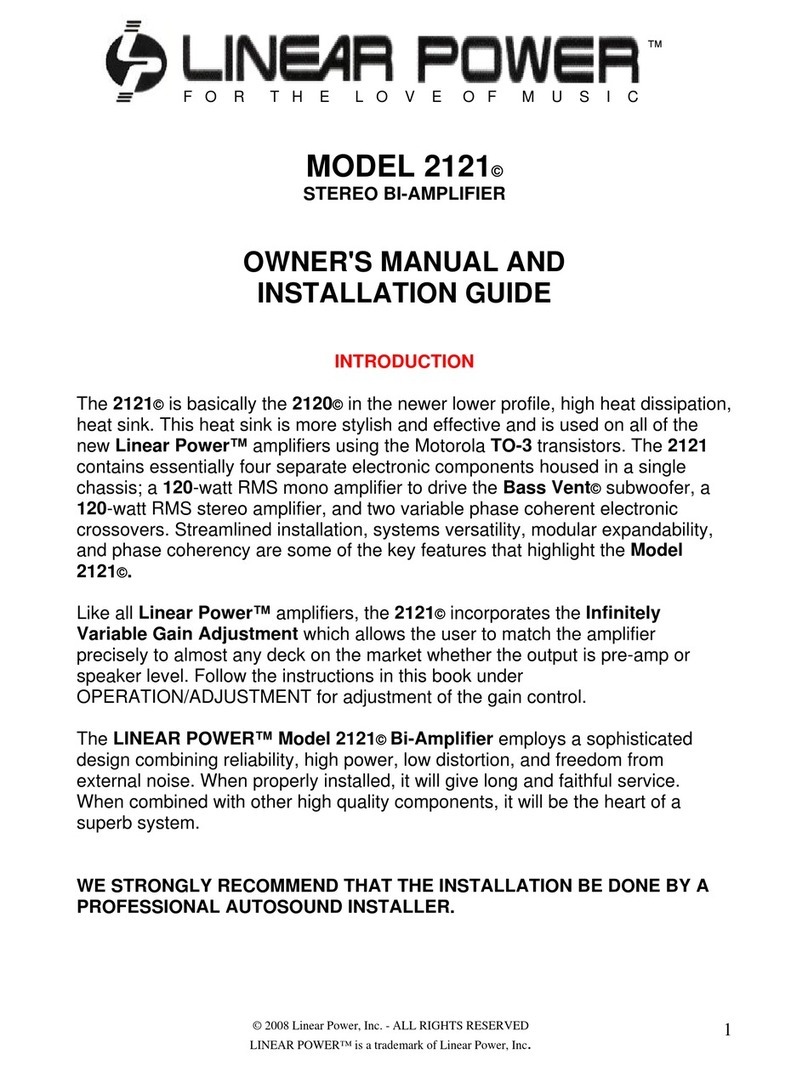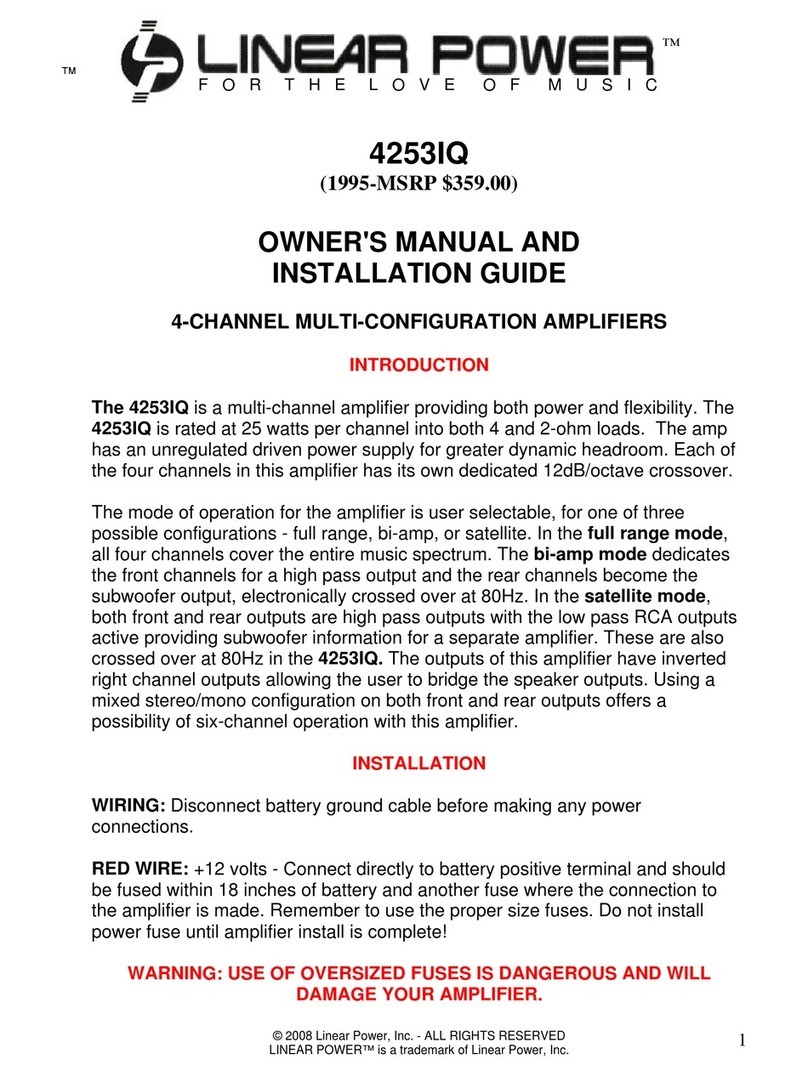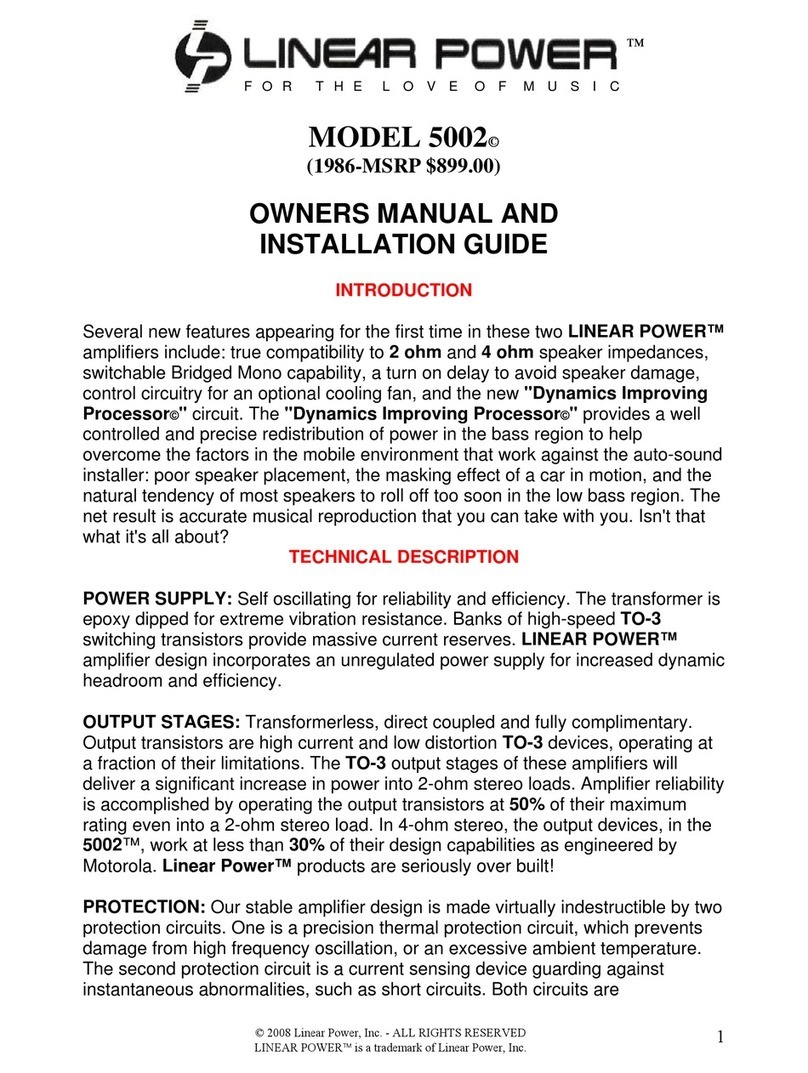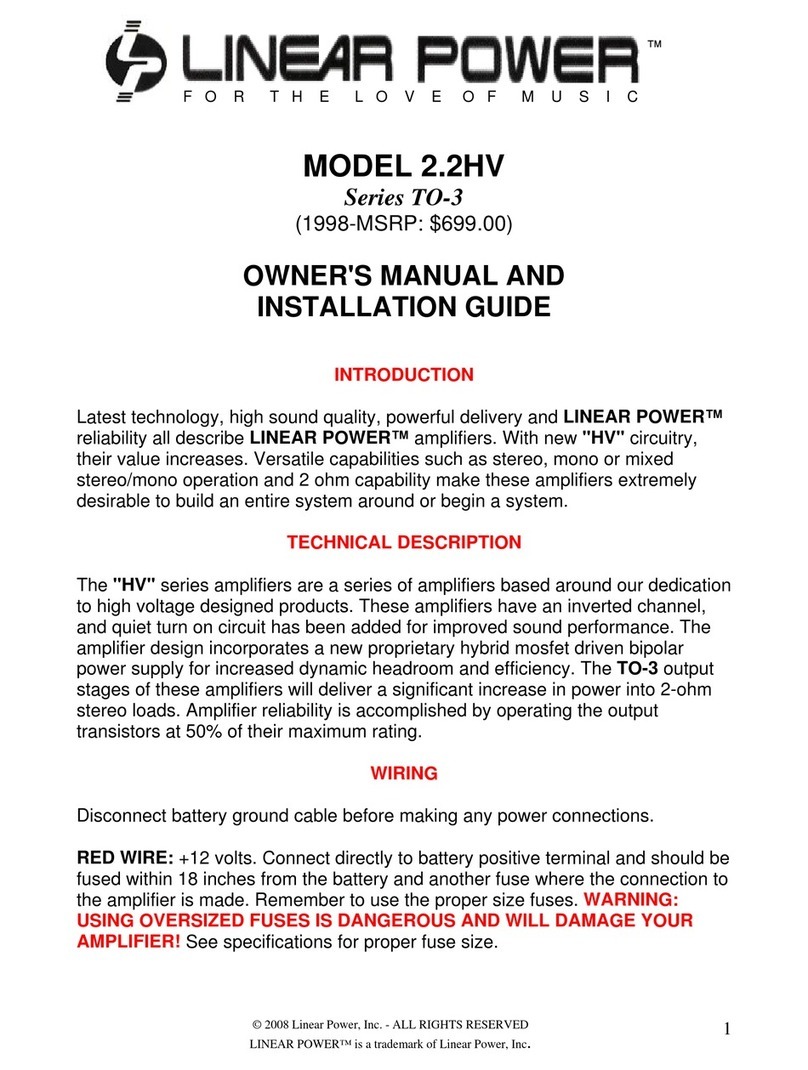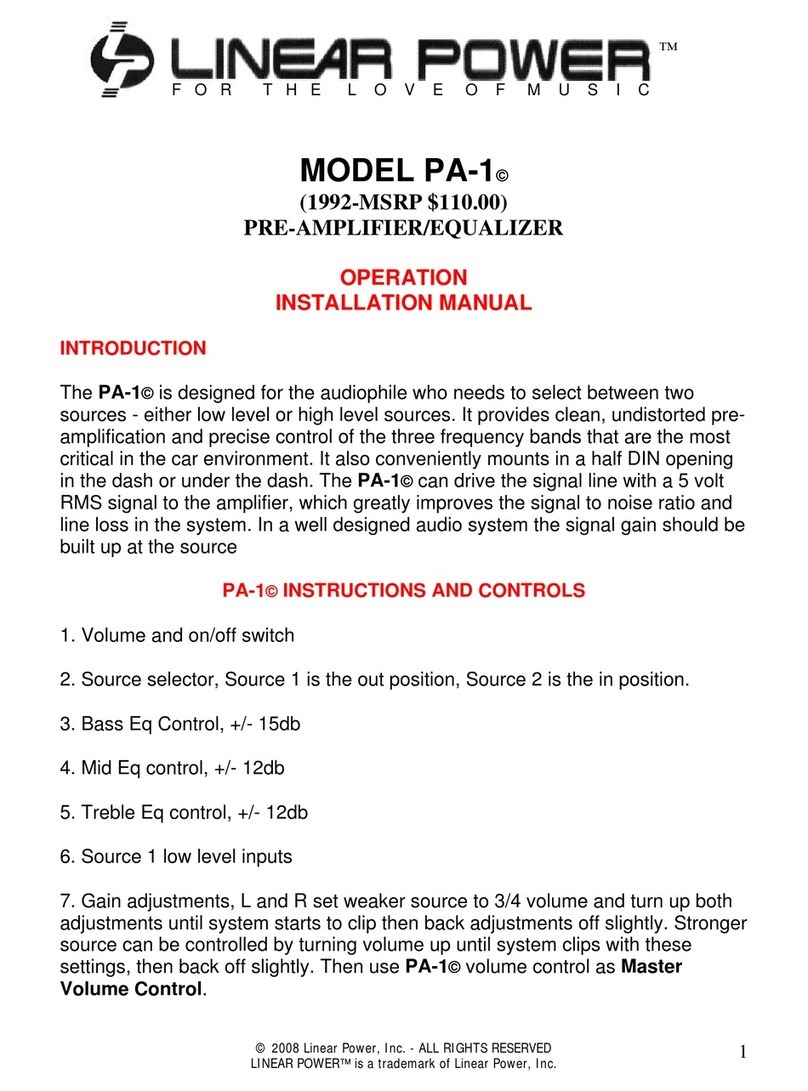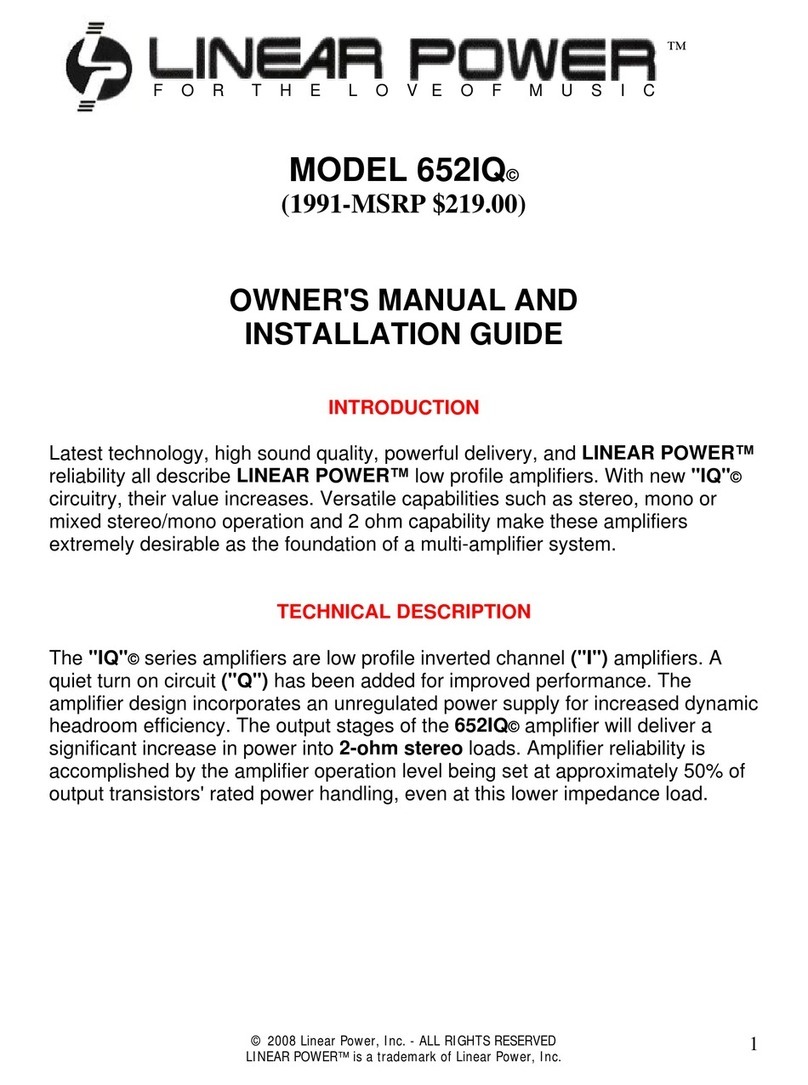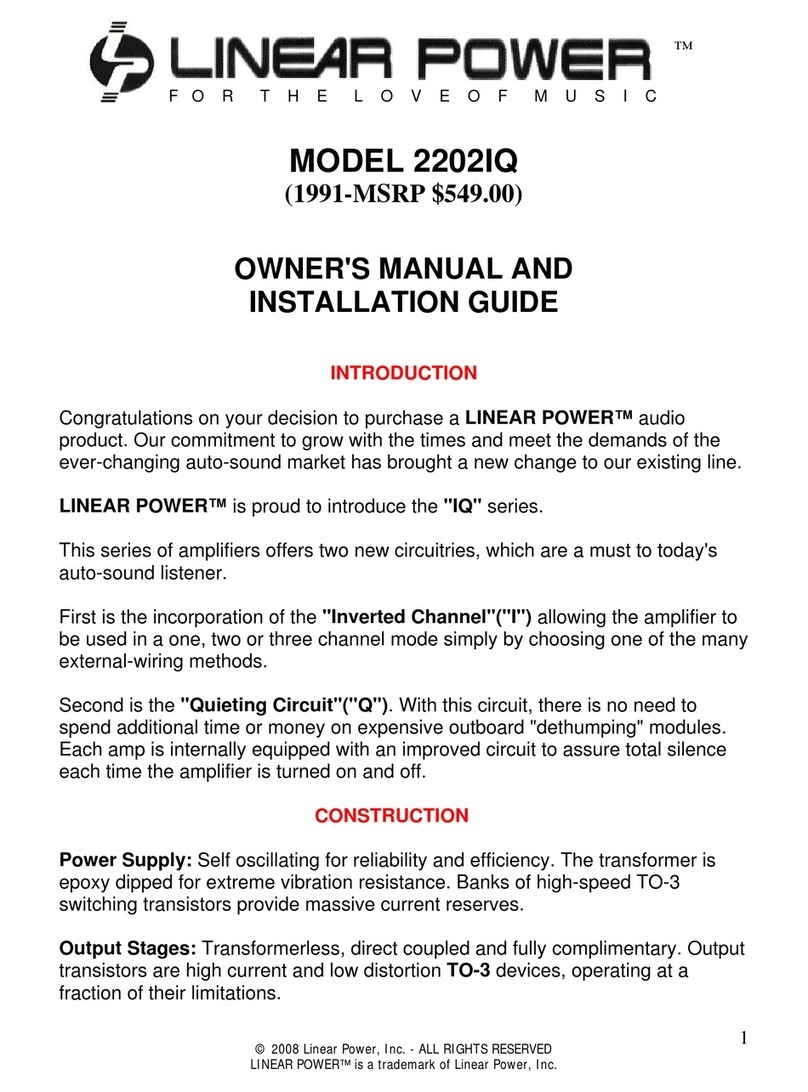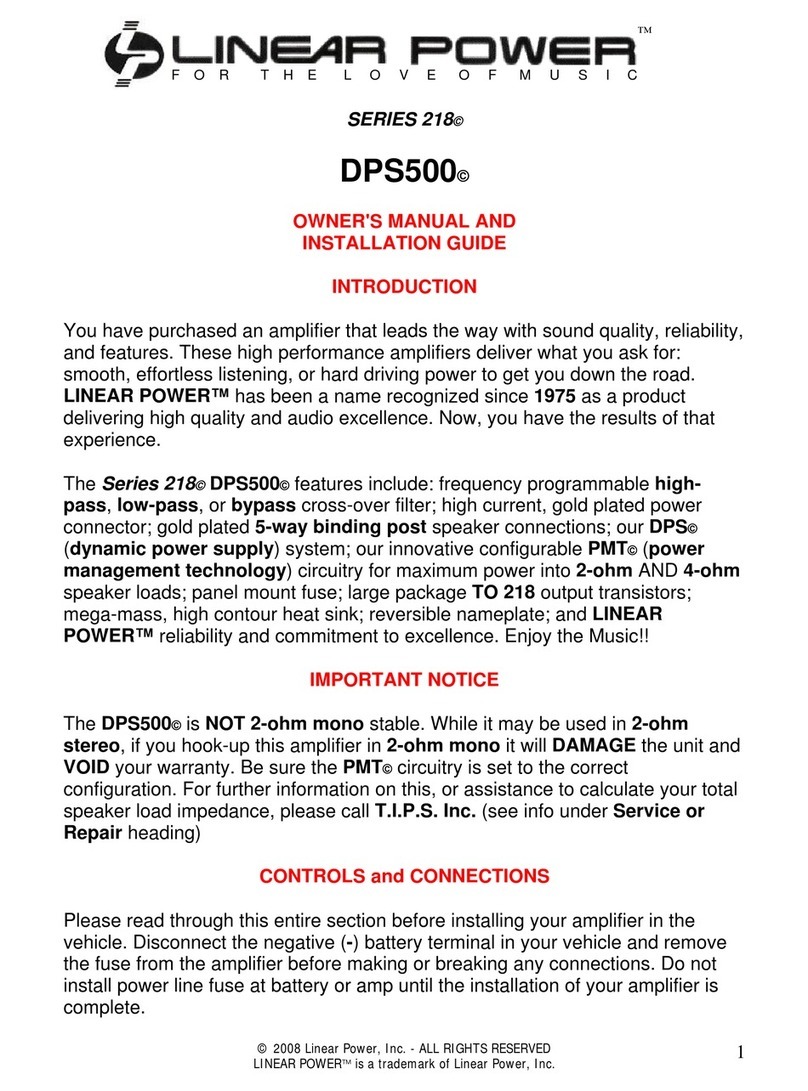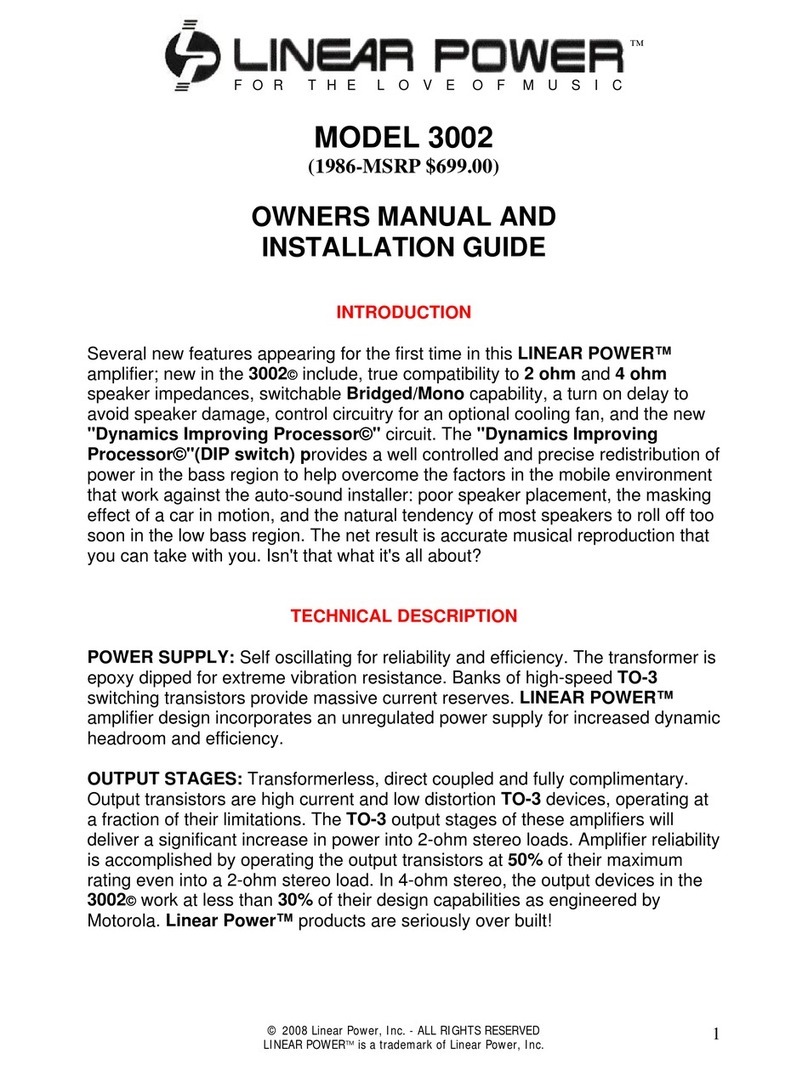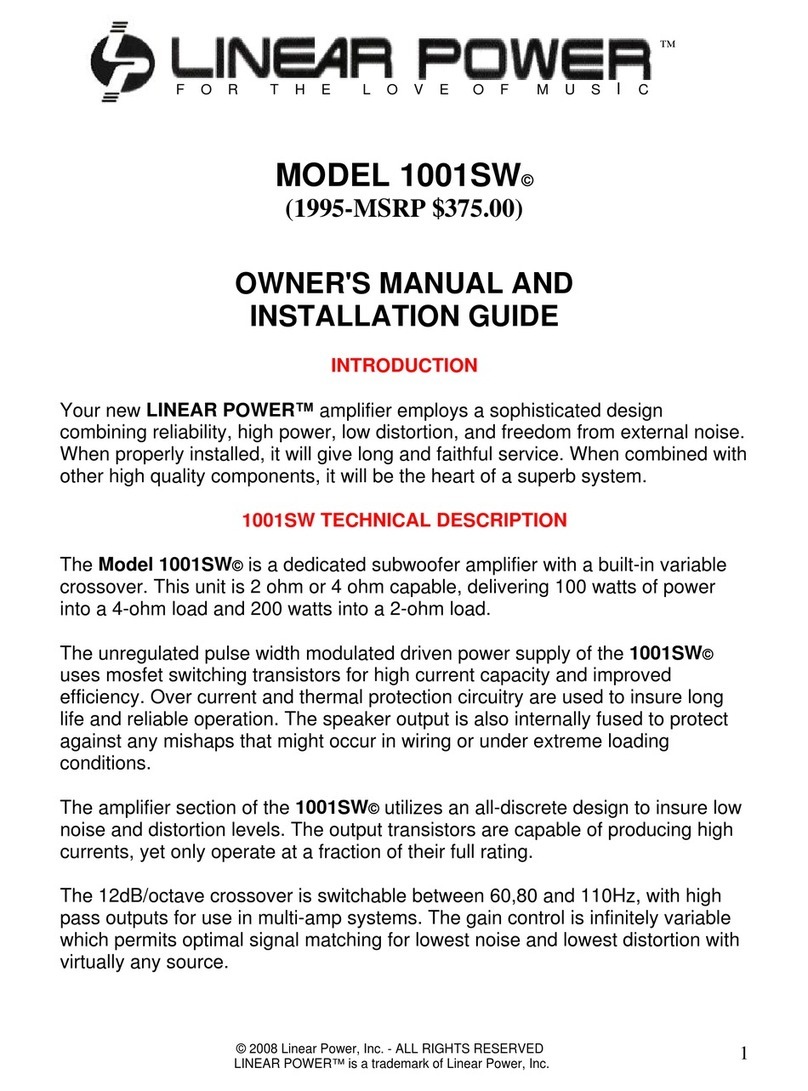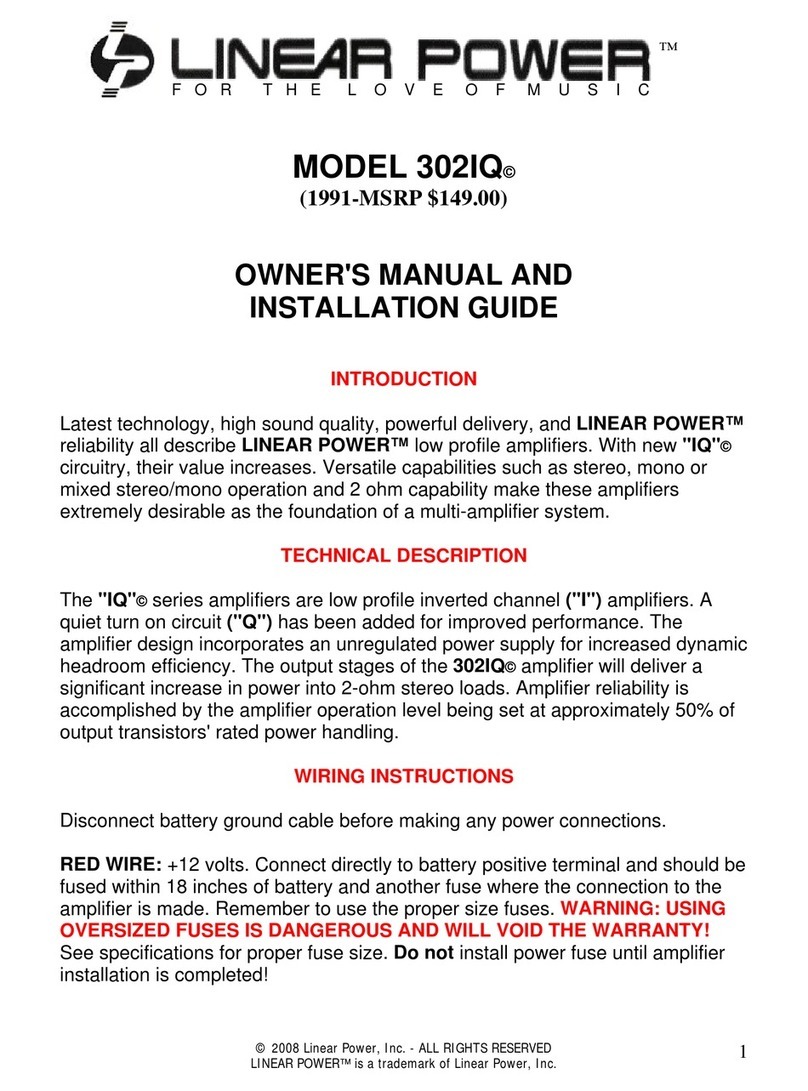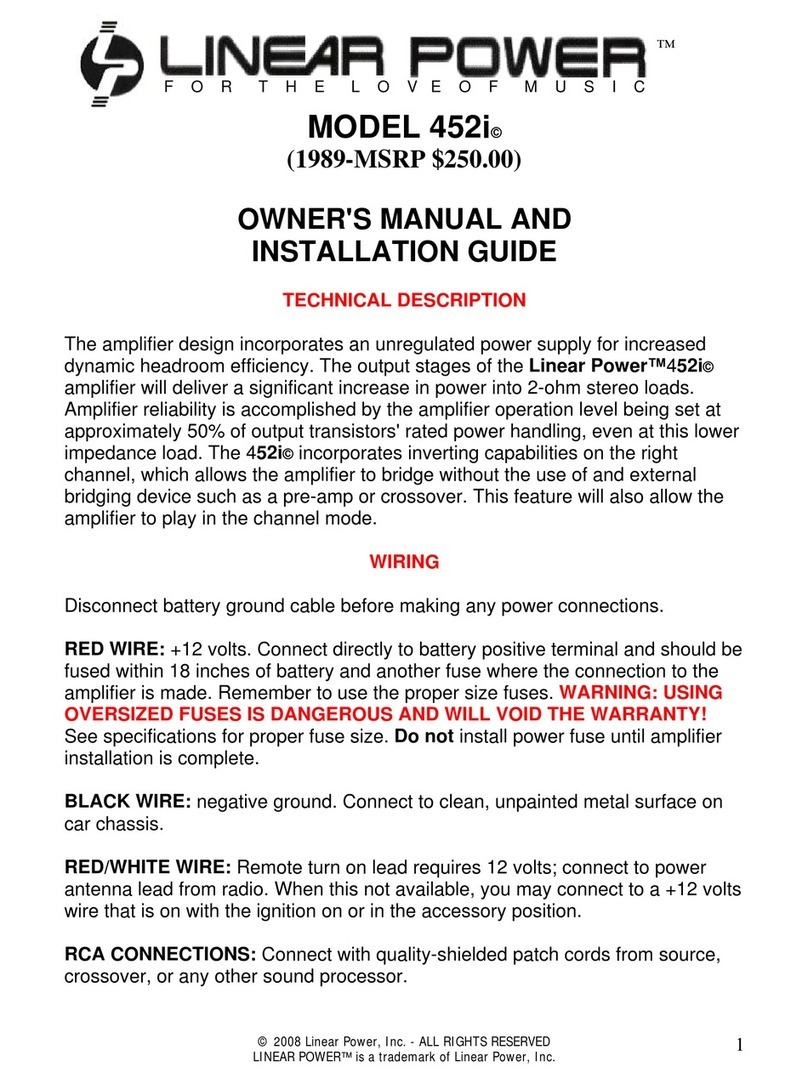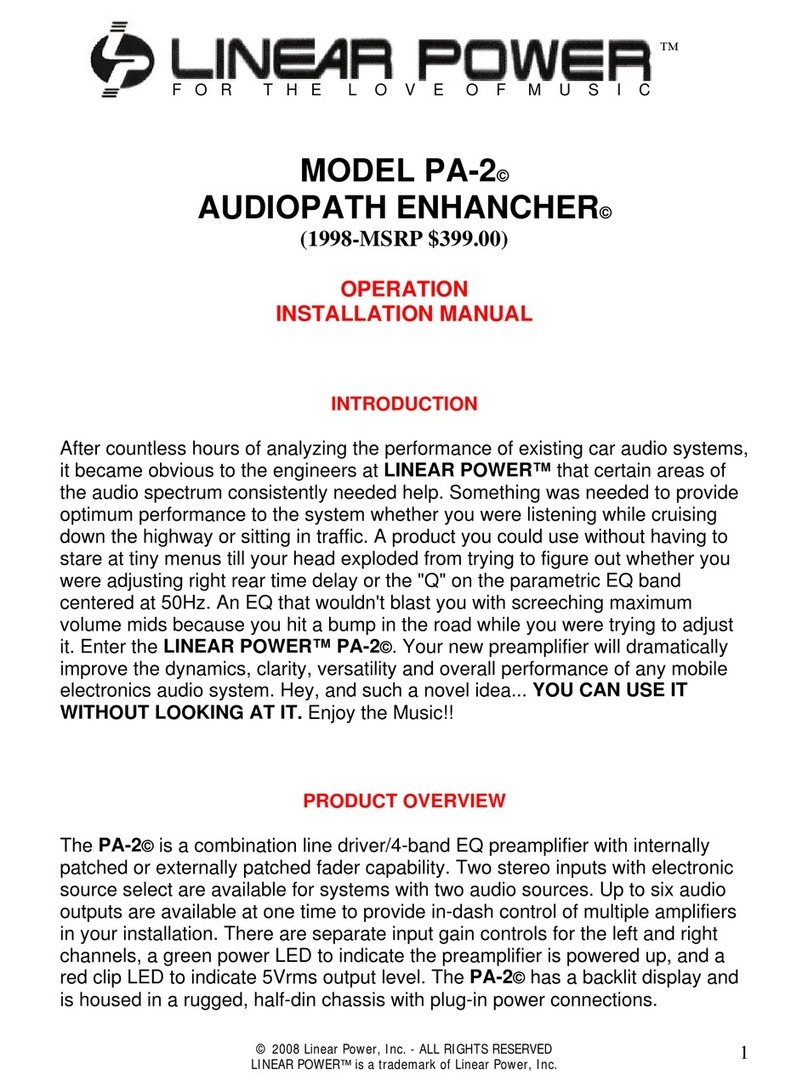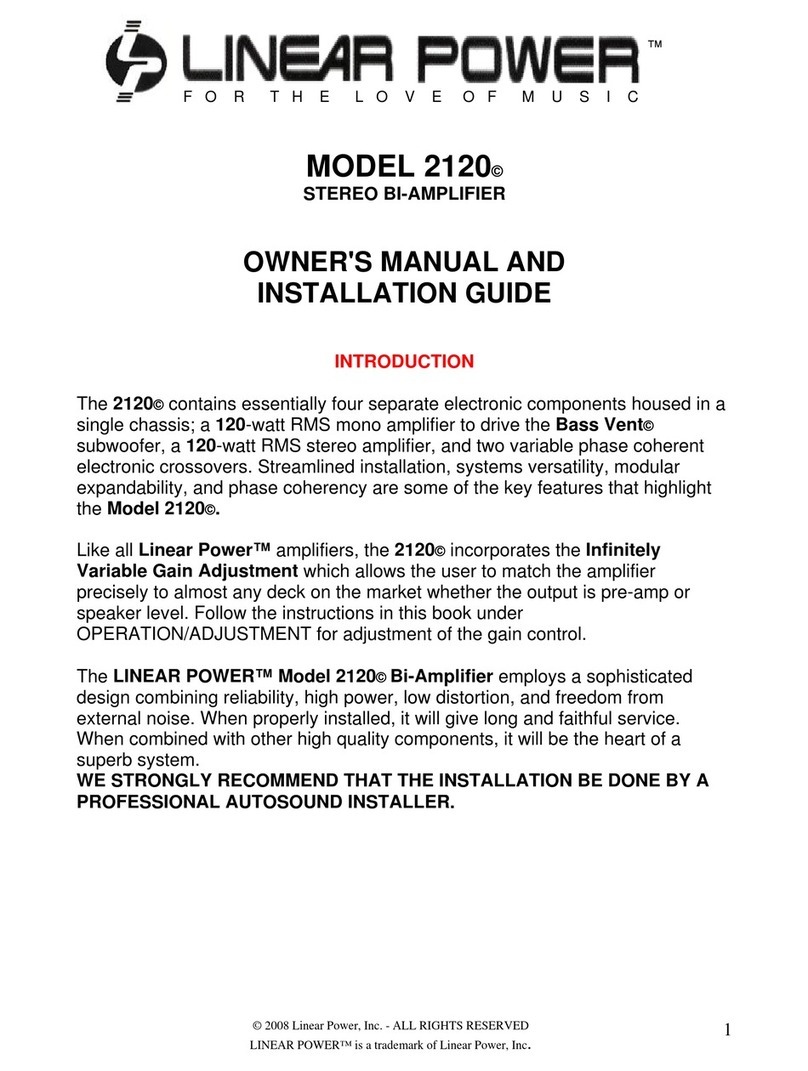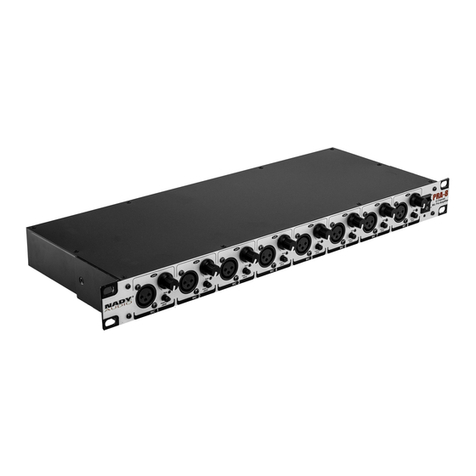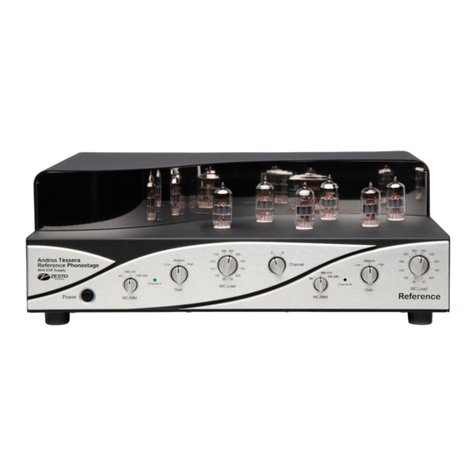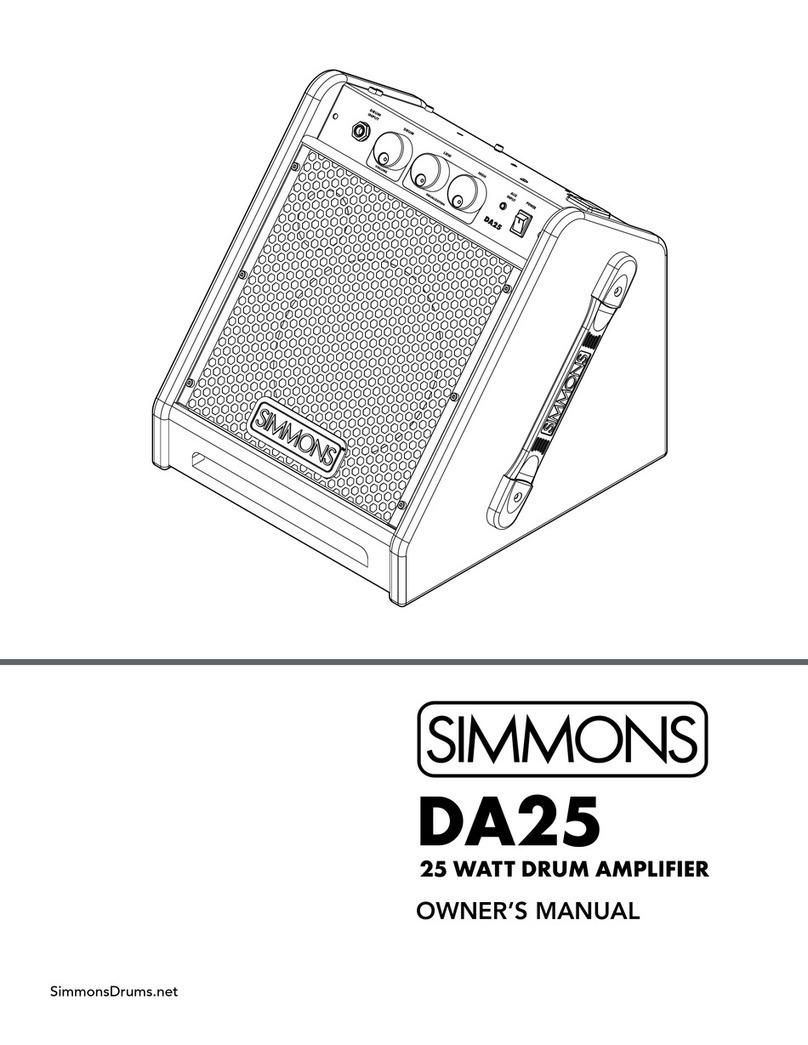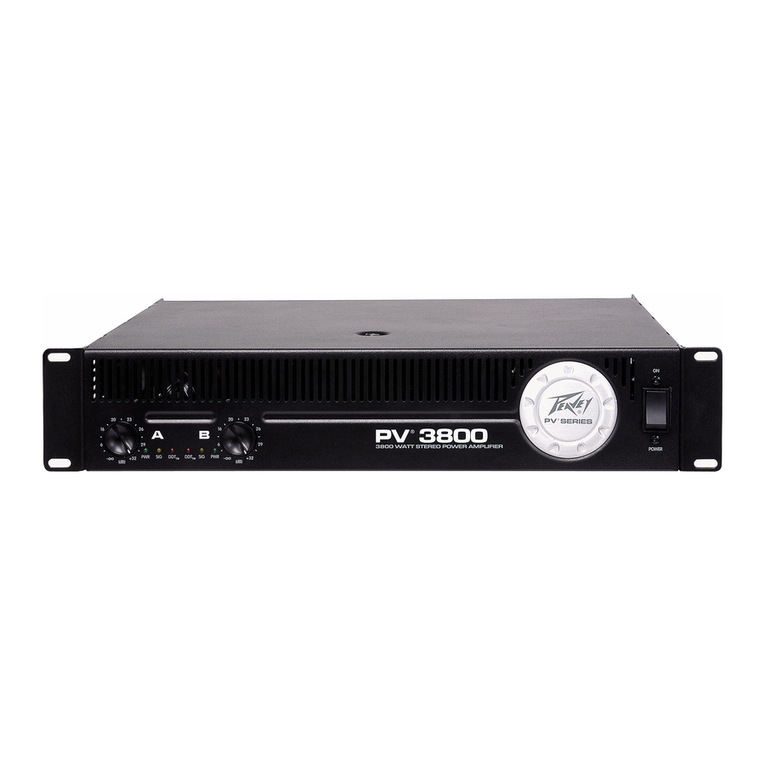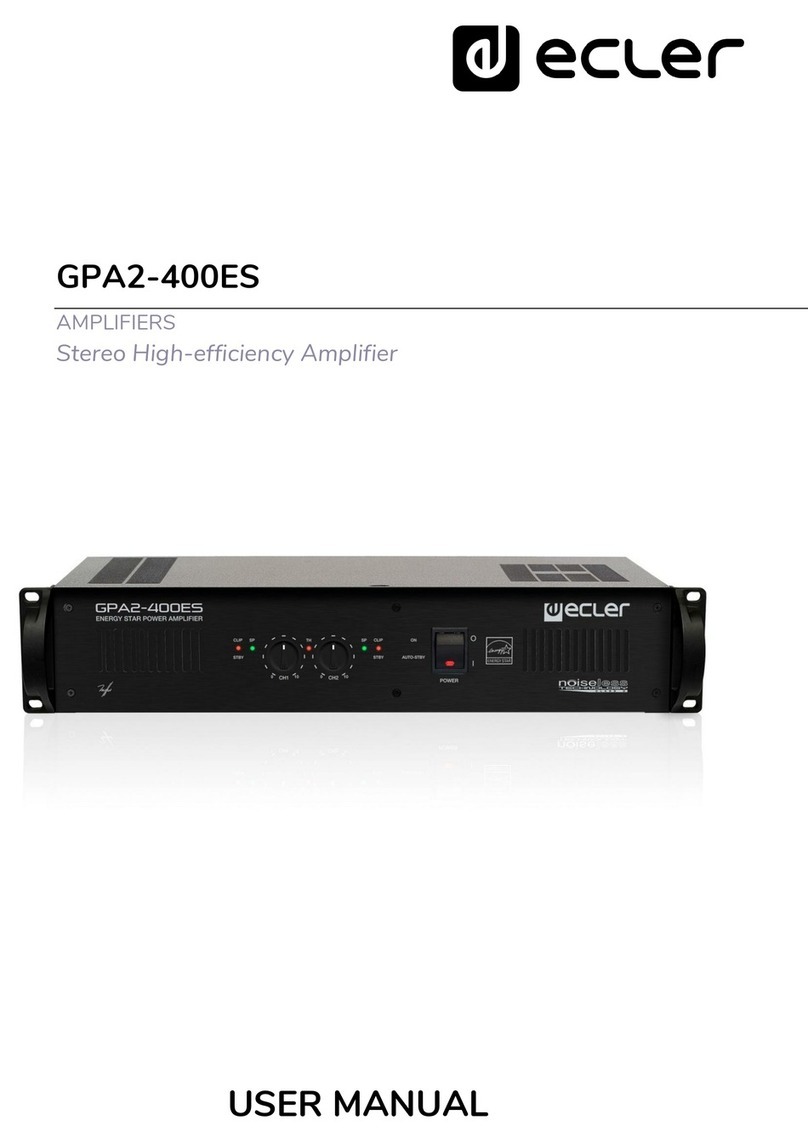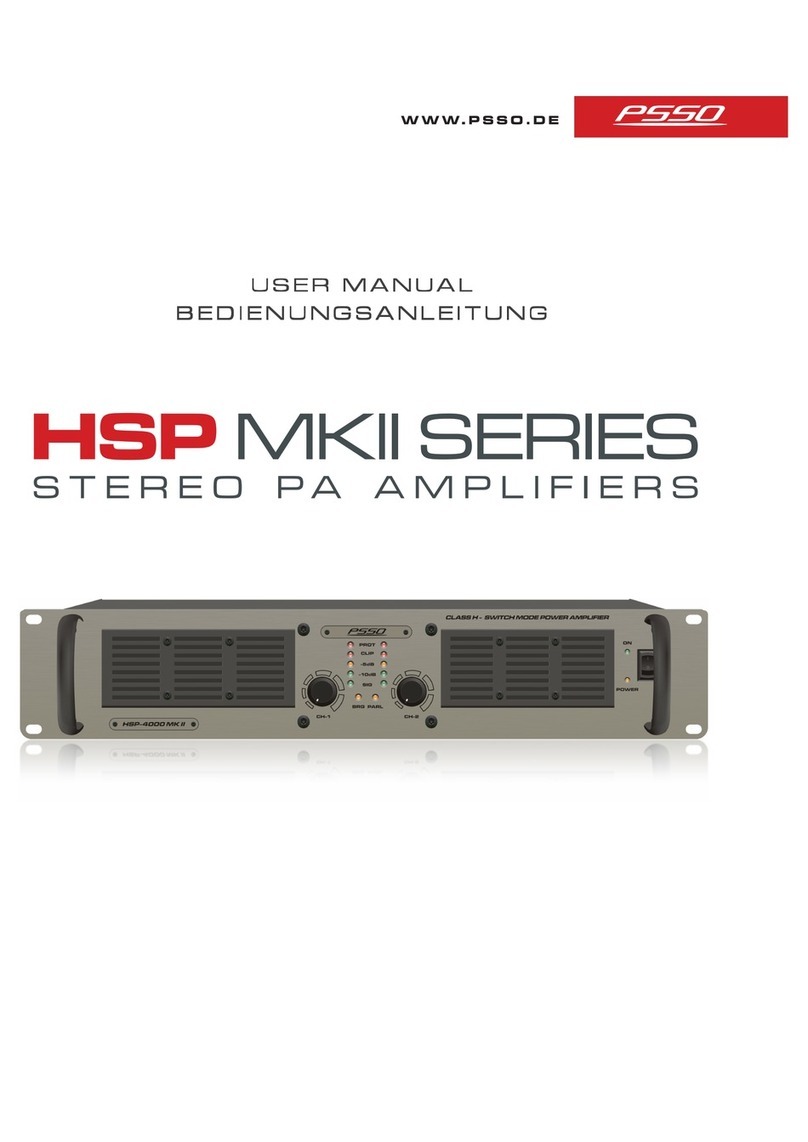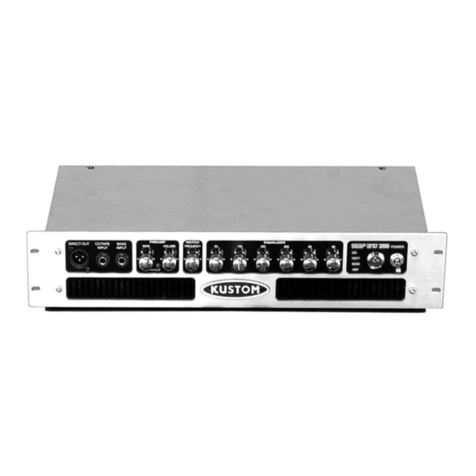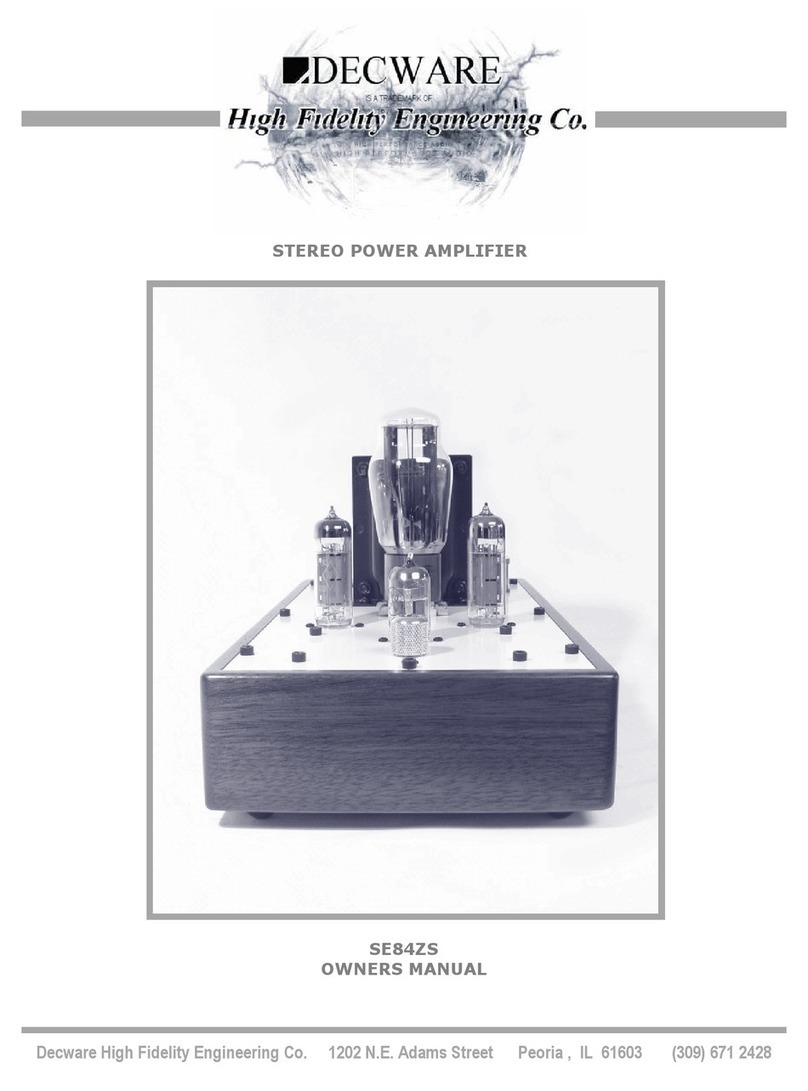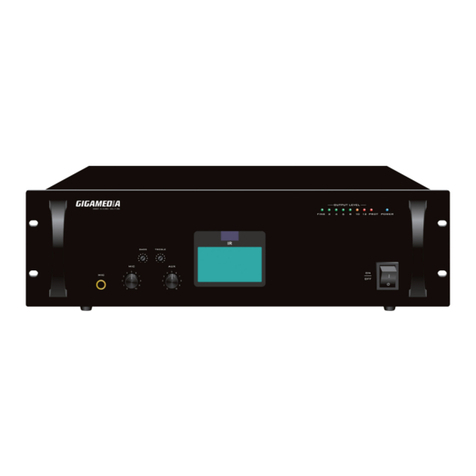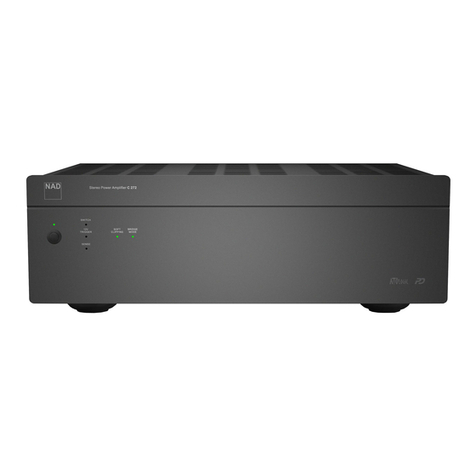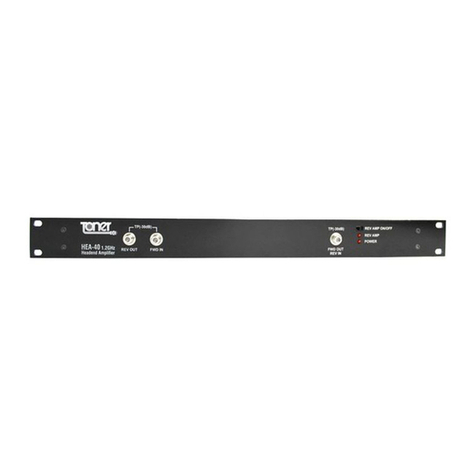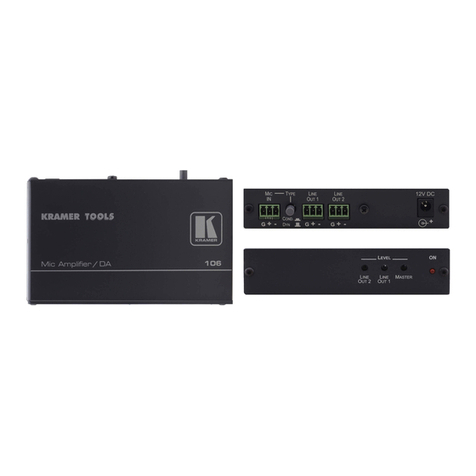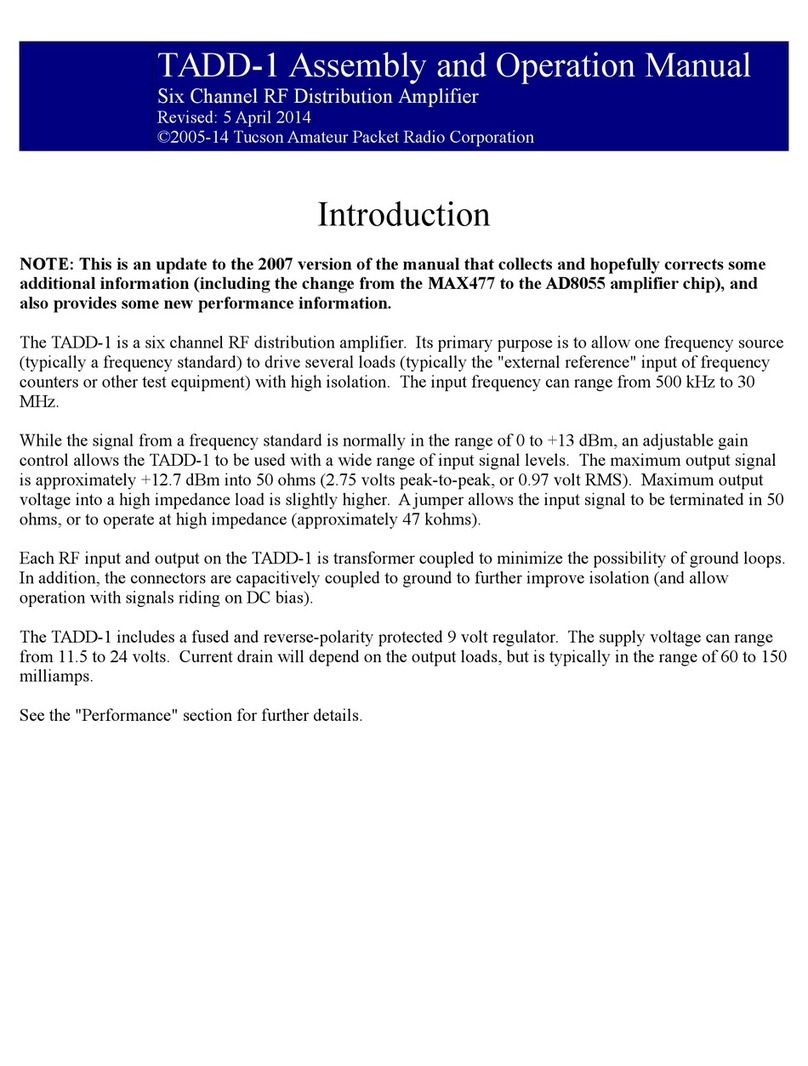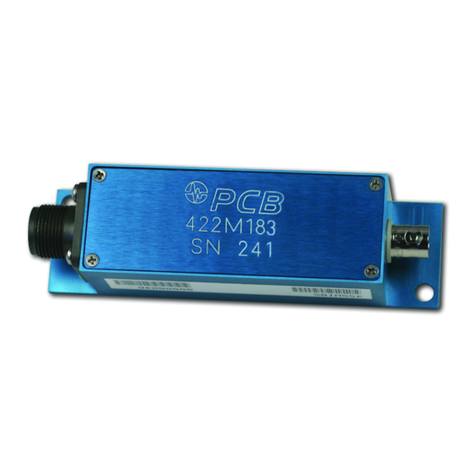
7. Fuse: Remove the fuse from the amplifier before making or breaking any
connections in your installation. If you need to replace the fuse, use only a fuse
of the same style and amperage rating as that shipped with the amplifier (see
chart below). If the fuse blows, it is telling you there is something wrong. Please
listen. The LP50©uses an ATC 15 amp fuse.
8. Status indicators: The green LED indicates the amplifier power supply is
working. If the green LED is flashing, it is an indication that the +12V
connection is dipping below 10.5V dc, or that the speaker load is too low. The
yellow LED indicates the amplifier has shut down due to overheating. When the
amplifier has reached the correct operational temperature, it will turn itself back
on. The red LED indicates the amplifier has shut down due to too much current
through the output stage. This excessive current can be caused by speaker
shorts, too low of speaker loads, incorrect transformer configuration, or incorrect
input level setting. The REM signal must be shut off and turned back on before
the current protect will reset and allow the amplifier to operate.
9. Crossover: The LP50©amplifier has a built in programmable crossover filter.
You may select the high-pass, low-pass or bypass modes thru a switch on the
bottom of the amplifier located near the speaker connections. Remove the black
cap plug to gain access to the switch. If you select high-pass mode the amplifier
will play all frequencies from 80 Hz and up. If you select low-pass mode the
amplifier will play all frequencies from 80 Hz and down. All amplifiers are shipped
in the bypass mode that disconnects both the input and output of the crossover
filter from the audio path. You can change the cutoff frequency from 80 Hz by
purchasing optional frequency selector chips and installing them in the place of
the 80 Hz chips. Frequencies available are 60 Hz, 70 Hz, 105 Hz, 160 Hz, 210
Hz, 285 Hz, and 340 Hz. The optional chips are available from your dealer.
MOUNTING
1. The amplifier will work best if it is kept as cool as possible. Mount the amp in a
position that will allow air to flow freely through the fins. Hot air rises, so orienting
the amp with the connectors facing the ground and the status indicators facing
the sky is the ideal mounting position. The amplifier should not be mounted
upside down. Be sure there is ample space above the amplifier to avoid trapping
heated air against the heat sink.
2. The heat sink of your amplifier is designed to act as a noise shield. To
maintain this protection, be sure the metal case of the amplifier does not touch
any metal in the car. Do not remove or damage the rubber grommets that provide
electrical insulation and vibration isolation. Avoid mounting the amplifier in the
dash or on the firewall where sources of noise such as your alternator,
windshield wiper motor, and air conditioner radiate the most energy.
© 2008 Linear Power, Inc. - ALL RIGHTS RESERVED
LINEAR POWER™is a trademark of Linear Power, Inc.
3
